Picas
Picas are a unit of measurement used in typography to ensure consistency in layout and spacing. In corporate branding, picas help maintain uniformity across print and digital designs, reinforcing a brand's professional and polished appearance.

Points
Points measure the size of type, crucial for readability and hierarchy. A brand’s use of point sizes affects how messages are perceived—whether bold and commanding or refined and subtle—shaping how trustworthy or innovative the brand feels.

Kerning
Kerning is the adjustment of space between individual letter pairs. In branding, precise kerning ensures logos and headlines are legible and aesthetically pleasing, which strengthens the perception of a brand’s attention to detail and quality.
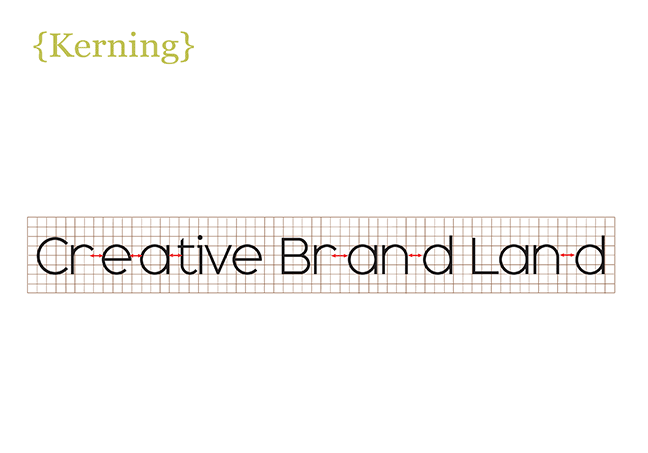
Tracking
Tracking adjusts spacing across a range of letters. Good tracking keeps brand messaging clear and visually balanced, helping audiences quickly absorb content while projecting a sense of harmony and cohesion in branded materials.
Leading
Leading refers to the vertical space between lines of text. Proper leading enhances readability and flow, which directly affects how approachable and user-friendly a brand feels—especially in large bodies of corporate content.
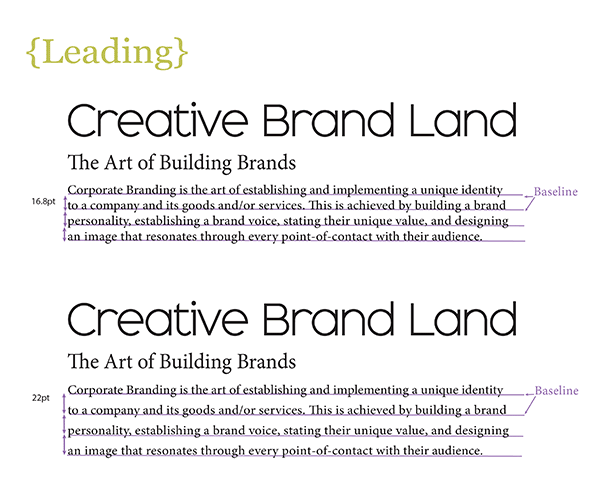
Anatomy of Typography
Understanding the structure of type (stems, bowls, terminals, etc.) is key to choosing fonts that reflect a brand’s personality. Typography anatomy influences how modern, traditional, formal, or casual a brand appears to its audience.

Ascenders and Descenders
Ascenders and descenders add rhythm and character to type. Their proportion impacts visual harmony and can subtly influence brand tone—elegant, playful, or authoritative—based on the font’s design and spacing.
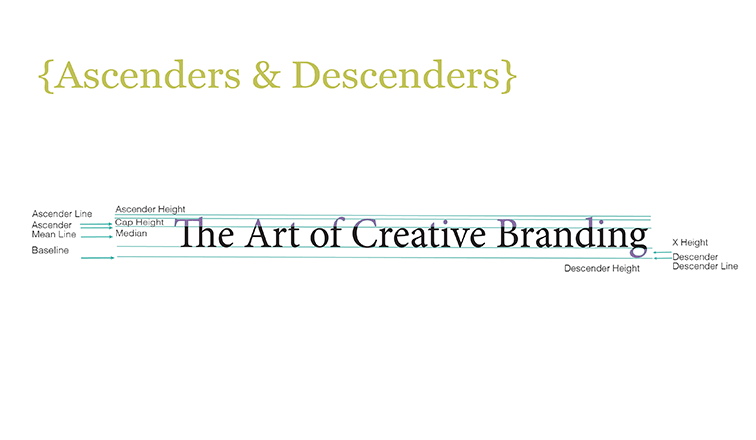
Serif & Sans Serif
Serif fonts often suggest tradition and reliability, while sans serif fonts feel modern and clean. Choosing between them is a strategic branding decision that affects how audiences perceive professionalism and brand tone.
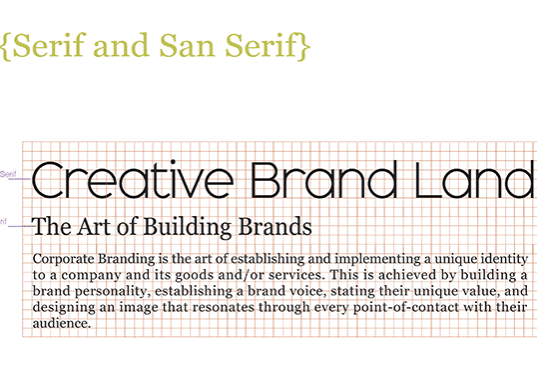
Italic
Italic fonts are used for emphasis or style, often conveying elegance or motion. In branding, italics can add nuance or hierarchy to communications, supporting brand storytelling with visual flair.
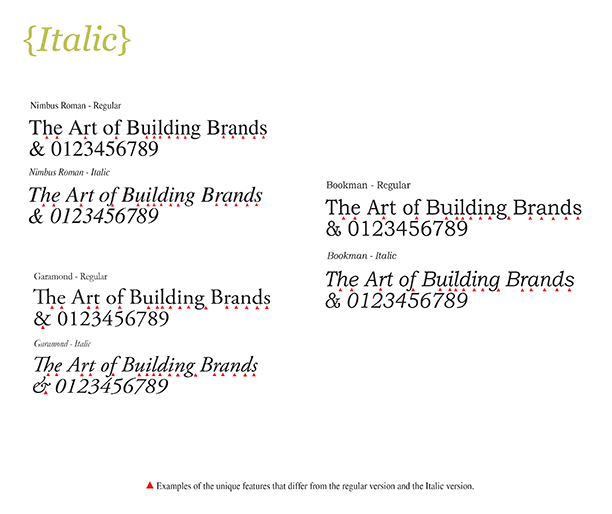
Obliques
Oblique typefaces are slanted versions of roman fonts, less stylized than italics. They offer subtle differentiation in branding when formality isn’t needed but variety is desired—adding a modern twist without distraction.
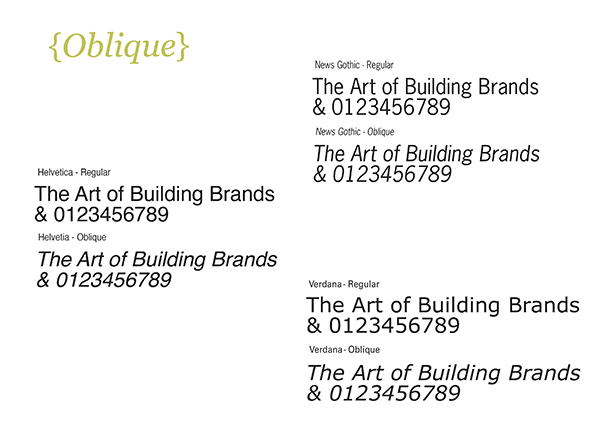
Cursive
Cursive fonts mimic handwriting, evoking personal, friendly, or artisanal qualities. When used thoughtfully, cursive type in branding can humanize a company and establish emotional connection with customers.

Decorative
Decorative fonts are distinctive and expressive. In branding, they should be used sparingly to highlight creativity or uniqueness, often in logo marks or headlines, where character and memorability are essential.

Display
Display fonts are designed for larger sizes and visual impact. Brands use them for attention-grabbing headlines and signage, setting the tone for campaigns and making a bold first impression.

Swashes, Glyphs & Special Characters
Swashes and special glyphs add decorative flourishes and customization. Brands can use these elements to enhance logos or headlines, creating signature typography that is visually unique and memorable.

MISSION STATEMENT
The art of bringing brands to life - start to finish ™
Sign up for marketing tips, how to's, inspiration and more.
For more information contact Christine Solazzi at info@ChristineSolazzi.com
© 2025 CreativeBrandLand @ 2025 Christine Solazzi